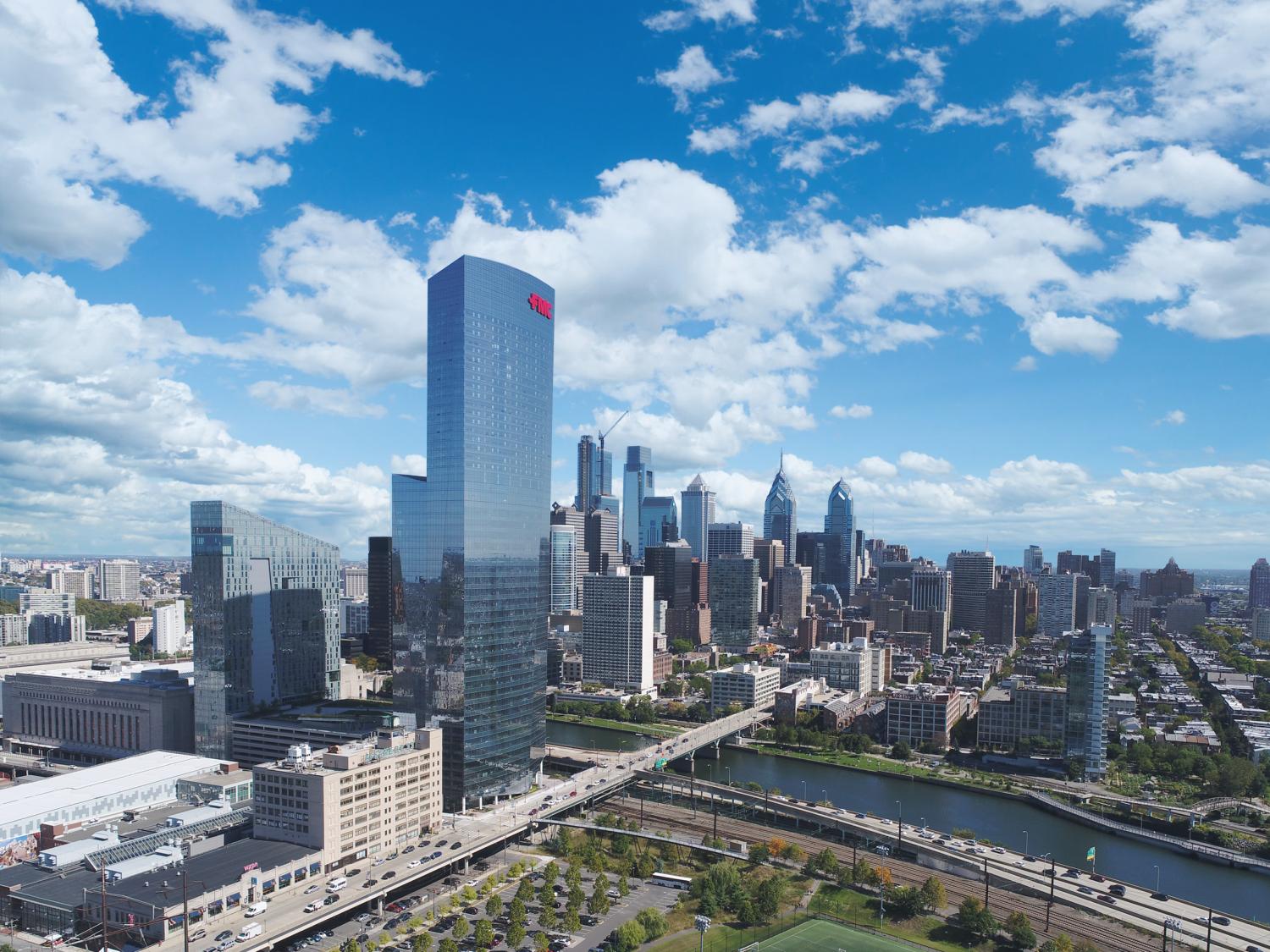The Hype around Healthy Buildings
“When I first started hearing about healthy buildings about three years ago, it was a bit of an ‘aha’ moment,” said Alex Grella, our General Manager in University City, Philadelphia. “JLL explains it best: if a company spends $3 per square foot on electricity, and $30 per square foot for rent, they should be spending $300 to engage their human capital. As building owners, we have a responsibility to take care of our tenants and make them as productive and successful as possible.”
After reading up on the benefits of the WELL certification program, our Property Management Team decided to pursue WELL Core Certification for FMC Tower. They enlisted the help of Healthy Buildings, BLTA Architects, and BALA Consulting, who were invaluable in terms of both support and information.
“WELL is one of the most robust certifications out there to address health and wellness. It evaluates the daily operations of the building, and how that impacts the health of everyone inside it,” said Bharati Bhosale, Sustainability Operations Manager at Healthy Buildings.
As pioneers of the healthy buildings movement, Brandywine has always focused heavily on the intersection between sustainability and human health and wellness, working to reduce our environmental impact, while positively impacting our building occupants.
The 10 components of WELL are air, water, nourishment, light, movement, thermal comfort, sound, materials, mind, community, and innovations. Each concept is designed with several mandatory preconditions, and several optional customizations. Our team began by collecting letters of assurance from different parties confirming that the tower was built to the preconditions. Eventually, a WELL representative visited to conduct an onsite verification for the submission.
“With LEED, there is no on-site verification,” said Roman Mysko, Chief Engineer. “With WELL, they actually come to the building and do air quality testing, water testing, and more.”
Beyond the building systems, the team had to explore other ways in which the built environment impacted building inhabitants.
“They say that in rough numbers, 50% of what you do is related to the building’s structure and systems, and the other 50% is policy and procedures,” said Alex. “With WELL, it’s not just the proverbial ‘bricks and sticks’. There really is a focus on how we can support people. In the war for talent, we can help our tenants attract the best and brightest by designing and creating spaces where people truly want to work.”
The WELL submission process helped us identify pain points and solutions. For example, studies show that most people walk around in a mild state of dehydration every day. That makes us feel less energized, which in turn, reduces performance. To combat this, we introduced a water filling station in FMC Tower’s lobby so people can grab water while running out for lunch or waiting to be signed in for a meeting.
Other improvements included ergonomically correct seating and break areas, a shared library in the lobby, sit-to-stand desks for the security team, anti-fatigue mats for the greeters at the front desk, and first aid kits and AEDS on each floor. On an annual basis, the FMC Tower team will perform quality testing to ensure that systems are being maintained and the building is operating at the highest possible level.
“We like that it’s not ‘one and done,’” said Roman. “This is a continuous commitment to the health and wellbeing of the folks inside the building.”
In July of 2019, FMC Tower at Cira Centre South became the first WELL Core Certified project at the Bronze level, globally, as well as the first WELL v2 certification in the U.S., and one of the first in the world.
This WELL certification places FMC Tower in an elite class of properties around the world, and further demonstrates our commitment to supporting human health and well-being in the built environment.

